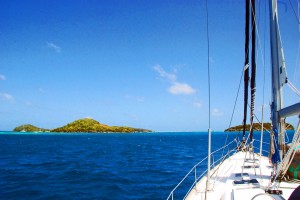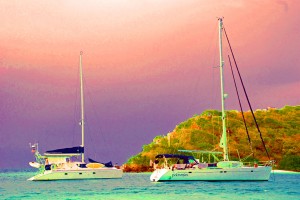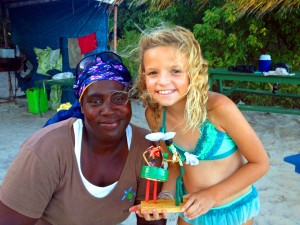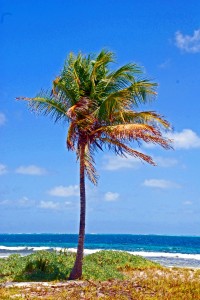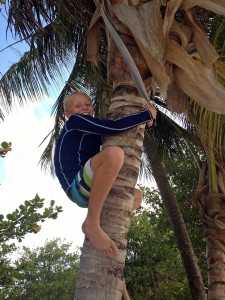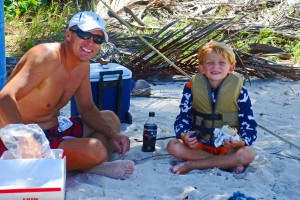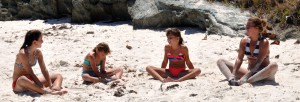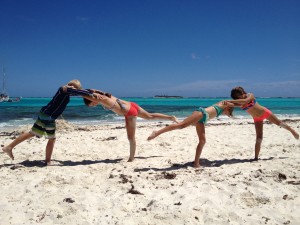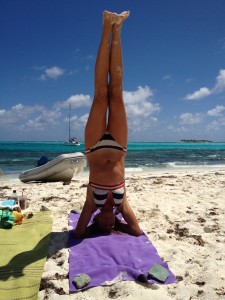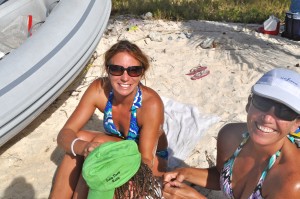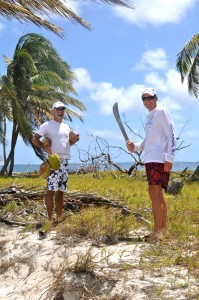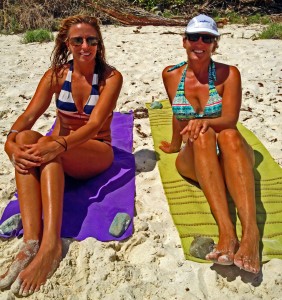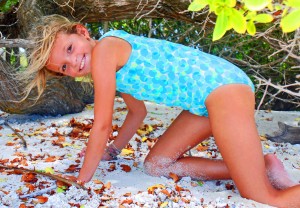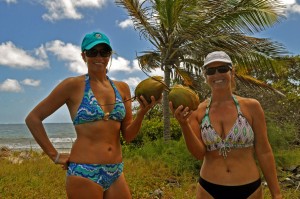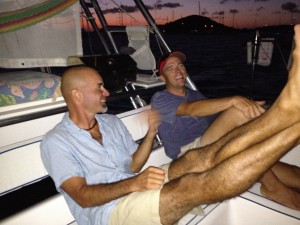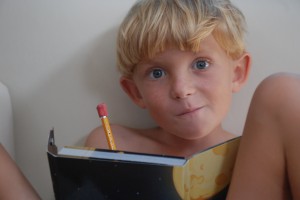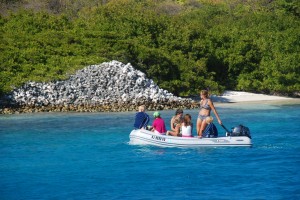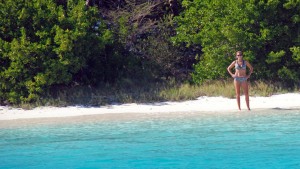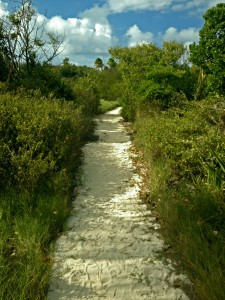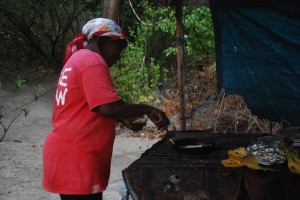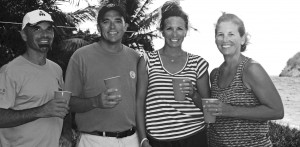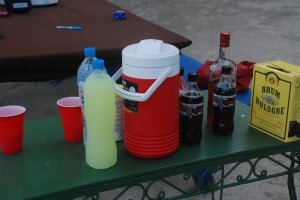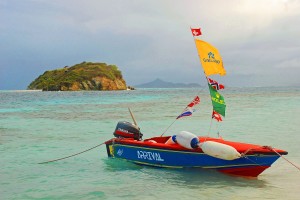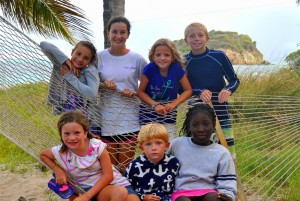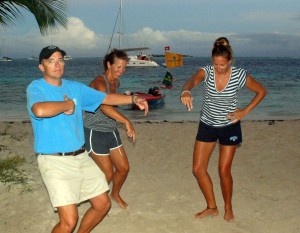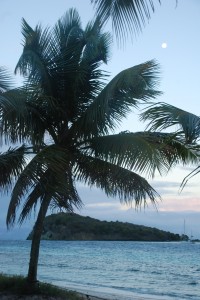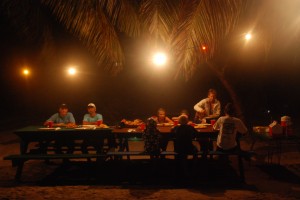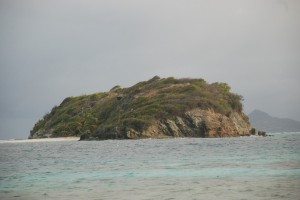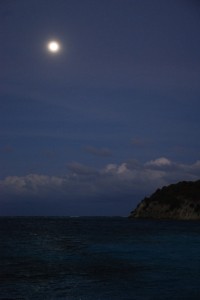Top Ten Ways To Experience Bequia
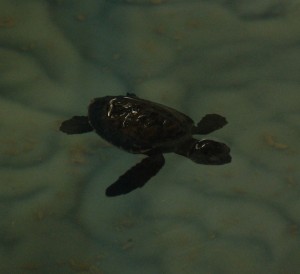 1. “They kill each other. I’m dealing with some mad men.” –Brother King
1. “They kill each other. I’m dealing with some mad men.” –Brother King
Brother King’s second bath was in the sea. He has been in the water ever since. Now an older man, he is full of stories to tell and has found a passion to round out a life on the waters of Bequia (beck’ way). He used to be a free diver, able to go down to 80 feet. By the time he was an adult, he had ear problems and went to see a doctor on St. Vincent. The doctor told him he spent so much time under water he had coral growing in his ears. This is one interesting guy.
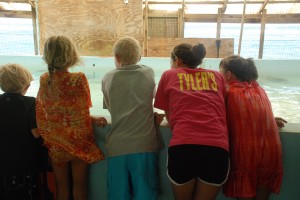
The kids meet the turtles
Our little tour group (Patronus and Anything Goes) had ventured across Bequia to visit the Old Hegg Turtle Sanctuary, located on the northeast part of the island. Brother King resides over the property like a mother hen. He built the sanctuary with his own hands and has spent his own money and time in an effort to protect the baby Hawksbill turtles of his beloved island.
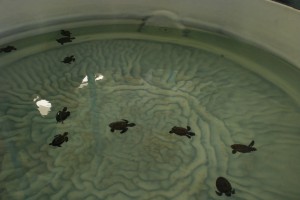
Killer Turtles
By the time he retired from skin diving in the mid 90’s, the Hawksbill turtle numbers had dwindled. The turtles are hunted for their meat, eggs, and beautiful shells. Today, Brother King hatches up to 180 eggs at a time and attempts to rear them until they are able to be released back into the sea. Over 2,000 turtles have been released to date. Oh! Are you wondering about that quote at the start of the post? At one point, we asked why some of the baby turtles were kept in separate tanks. He deadpanned, “They kill each other! I’m dealing with some mad men.”
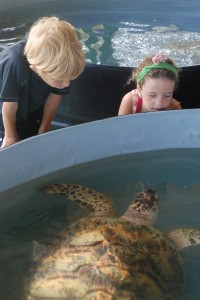
Porter and Olivia meet one of the older turtles
On his website, http://turtles.bequia.net/, Brother King says, “My project involves monitoring beaches, checking nests, trying to protect mother turtles and eggs from poachers, collecting hatchlings, and taking them to my sanctuary to keep them safe during the most vulnerable years of their life. Outreach to our island youth regarding this fascinating species is also an important part of the sanctuary’s mission.
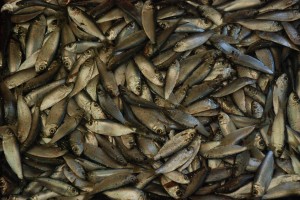
I keep the turtles in my sea-water ponds, feeding them on canned tuna for six months. Then they are fed small fish (sardines, etc.) until they are 3 years old (14 inches long) at which time they are released into the ocean. This gives them a better chance to survive, and instead of one from one thousand reaching maturity, this project will help repopulate the ocean sooner with about fifty from one hundred.”
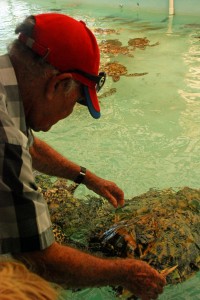
Brother King and his best friend
When he is not tending to his little friends, he speaks to visitors like us. We were entertained by his stories of a lifetime on the island of Bequia. We were moved to see a man with such a passion for making a difference. It was so clear how much he loved these little sea animals. One handicapped turtle is his pet. She would not survive in the ocean. When Brother King calls to her, she swims right up to him and pushes her head under his hand for a nuzzle. I found myself hoping that I would find my “turtles” someday so that I could throw myself into a worthy cause and make My Big Difference in the world.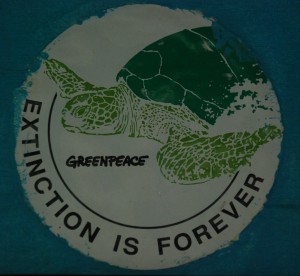
2. “Do you think we’re a bunch of monkeys?”
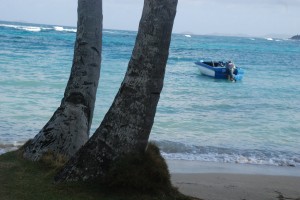
pretty Bequia scenes included for your viewing pleasure, since I deleted the offending photograph….
Our experience on Bequia didn’t start out this well. Not five minutes after stepping on land, Wendy and I were walking along the quaint road that runs along the waterfront. I snapped photos and we peeked into the different shops and admired the local crafts being sold by the street vendors. I looked across the street and a scene caught my eye. I raised my camera to take a picture of a small fishing boat, which was up on the hard (sitting on land). The boat sat under the shade of the trees with the beach and the harbor in the background.
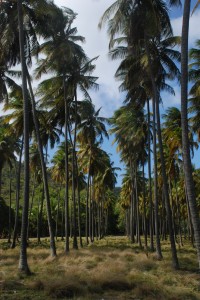 As I took the picture, a man sitting next to the boat starting screaming at me. From across the road! I looked at Wendy and asked her what he was saying. He was clearly upset at me and I figured it must be because I took a picture of his boat. I walked up to him to talk about it. There were about 8 more young men liming under the trees with him. He yelled that I can’t take his picture and that us tourists just think we can take pictures of people like they were in a zoo. Or something to that effect. I apologized immediately and agreed with him that one shouldn’t take pictures of people without their consent, but I explained that I was taking a picture of the boat and the harbor, not of him (full disclosure: I was aiming at the boat and the harbor, but there is a chance that he and other people ended up in the shot. Also, I have broken the rule of asking permission to take someone’s picture a few times on this trip, when time was of the essence or we were driving through a town. Also, this rule doesn’t apply when taking pictures at a public event like a parade where taking pictures is expected. So there.).
As I took the picture, a man sitting next to the boat starting screaming at me. From across the road! I looked at Wendy and asked her what he was saying. He was clearly upset at me and I figured it must be because I took a picture of his boat. I walked up to him to talk about it. There were about 8 more young men liming under the trees with him. He yelled that I can’t take his picture and that us tourists just think we can take pictures of people like they were in a zoo. Or something to that effect. I apologized immediately and agreed with him that one shouldn’t take pictures of people without their consent, but I explained that I was taking a picture of the boat and the harbor, not of him (full disclosure: I was aiming at the boat and the harbor, but there is a chance that he and other people ended up in the shot. Also, I have broken the rule of asking permission to take someone’s picture a few times on this trip, when time was of the essence or we were driving through a town. Also, this rule doesn’t apply when taking pictures at a public event like a parade where taking pictures is expected. So there.).
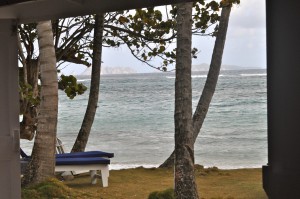
pretty
He continued to rant as if he hadn’t heard what I just said. I interrupted him. “I said I apologize. And the picture was not of you.” He actually said, “Do you think we’re a bunch of monkeys?!” I might have been worried about our safety but I noticed out of the corner of my eye that his friends were all laughing at him (plus Wendy and I are tough cookies and can totally take care of ourselves). One of them piped in and said, “Leave her alone. She wasn’t taking a picture of you. And she apologized!”
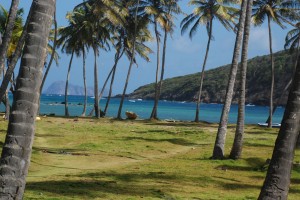 Now he started in on such a convoluted story that I decided to stay and shut this thing down (My, how very compassionate and Buddhist of you, Erica!). He said, “What if my wife was up on that hill and she was looking for me? And she thought I was working? And you went up that hill and showed her the picture of me sitting under this tree doin’ nothing? Then I’d be in big trouble!” Ignoring the obvious lapse in logic, I planted my feet on the ground, looked him right in the eye, and with a cheeky smile, said, “If you’re hiding out from your wife and not working when you’re supposed to be, you’ve got much bigger problems than someone taking your picture.” His friends erupted in laughter and slapped their thighs, whooping, “Doh! She got you! She got you!”
Now he started in on such a convoluted story that I decided to stay and shut this thing down (My, how very compassionate and Buddhist of you, Erica!). He said, “What if my wife was up on that hill and she was looking for me? And she thought I was working? And you went up that hill and showed her the picture of me sitting under this tree doin’ nothing? Then I’d be in big trouble!” Ignoring the obvious lapse in logic, I planted my feet on the ground, looked him right in the eye, and with a cheeky smile, said, “If you’re hiding out from your wife and not working when you’re supposed to be, you’ve got much bigger problems than someone taking your picture.” His friends erupted in laughter and slapped their thighs, whooping, “Doh! She got you! She got you!”
Wendy and I turned and walked away. The friends were yelling, “Come back! Don’t pay no bother with him. Where you from? He drunk! What you doing later?” but we kept walking. I was a bit shaken up. I was upset that in five minutes on this new island, we had already been made to feel unwelcome. But then Wendy told me she was proud of me. Later, when recounting Photo-Gate to the guys, I was able to laugh. I was surprised that in a group of 8 big, tough looking guys, I felt no fear in walking right up to them and standing my ground. The net result of this experience is that I still look back on it and smile, knowing that I can be strong when the situation calls for it.
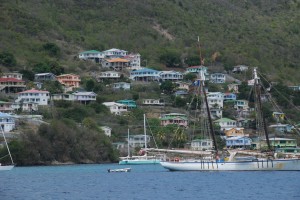
the pretty town we walked through
3. “Vi tycker om din batik boutique.” (We like your batik boutique.)
The rest of our Bequia adventure was much less dramatic. We enjoyed the little shops in town, especially the handmade batik store, which is owned by a Swedish woman. I tried to speak to her in Swedish, but she didn’t have much patience for my low skill level.
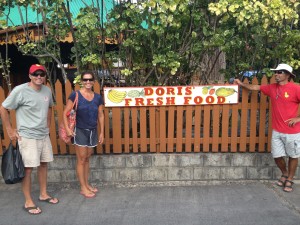
Grown-ups posing in front of a tiny supermarket as if they were at Disney.
We found a cute little sandwich shop that sold fresh bread as well as a homemade ice cream shop! Perhaps the find that excited us the most was Doris’. We found this little supermarket on a back street and were blown away by the amount and variety of food that Doris, a short and sweet Indian woman, was able to stock. Well, now that we’ve been in the Caribbean so long, it doesn’t take much of a food store to impress us. The fact that they had lettuce AND cheese AND chocolate chips was enough for us to start breathing heavily.
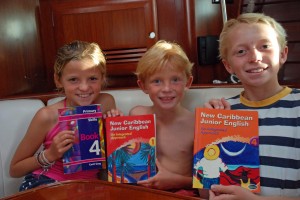
Know any other kids this happy about doing Language Arts?
We also found the best book store we had seen since the United States. It has lots of Caribbean literature, maps, and guidebooks. I purchased Language Arts books that are used in Caribbean schools. The stories, language, and cultural references are all very Caribbean (ex. “Lydia took a sack of bananas to the market on Saturday.). I got them for each of the kids to use in boatschooling and they love the stories, poetry, and folktales.
4. “Every twenty minutes on the Appalachian Trail, Katz and I walked farther than the average American walks in a week. For 93 percent of all trips outside the home, for whatever distance or whatever purpose, Americans now get in a car. On average, the total walking of an American these days – that’s walking of all types: from car to office, from office to car, around the supermarket and shopping malls – adds up to 1.4 miles a week…That’s ridiculous.” ― Bill Bryson, A Walk in the Woods: Rediscovering America on the Appalachian Trail. (Okay, now I’m just forcing you to read quotes by my new favorite author. At least it has to do with hiking. But it’s a stretch, so I’ll include this one about the history of whaling:)
“American whale oil lit the world. It was used in the production of soap, textiles, leather, paints, and varnishes, and it lubricated the tools and machines that drove the Industrial Revolution. The baleen cut from the mouths of whales shaped the course of feminine fashion by putting the hoop in hooped skirts and giving form to stomach-tightening and chest-crushing corsets. Spermaceti, the waxy substance from the heads of sperm whales, produced the brightest- and cleanest-burning candles the world has ever known, while ambergris, a byproduct of irritation in a sperm whale’s bowel, gave perfumes great staying power and was worth its weight in gold.” ― Eric Jay Dolin, Leviathan: The History of Whaling in America
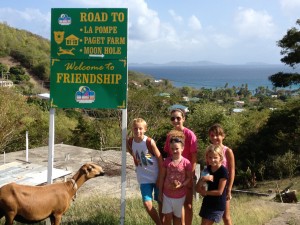
A local goat harasses us into going back to town…
In a burst of energy, Wendy and I decided to take a hike with the kids “over the hill” to Friendship Beach. We wanted to see where the whales are taken when one is caught. Bequia has long been an island whose livelihood and food depended on whaling. Bequians abide by an international agreement that allows them to kill two whales a year for food to be consumed on the island. The whalers are part of a long line of men who use traditional methods of harpooning. We had hoped to maybe talk to a whaler to better understand this culture, which is very different from our own.
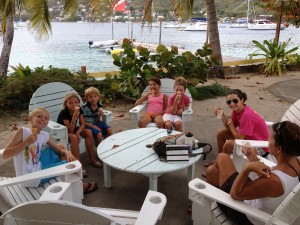
ice cream for the first time in a long while
Our guidebook, as always, promised that the walk to Friendship Bay was totally doable. But alas, we were hot and miserable by the time we got to the arrowed sign that said, “Friendship Bay”, so we decided to take a bus back to town and get ice cream instead. Frankly, everyone was happier that way! (And no need to feel guilty about it. We walk way farther than 1.4 miles a week!)
5. “Cruising is fixing your boat in exotic places.” – Co Webb
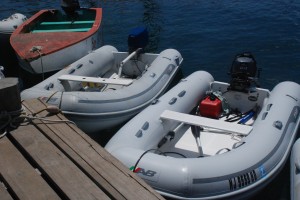
Tender “Fire Bolt” back in action.
Chris and Craig were busy for almost two days trying to fix our outboard engine. We were so grateful to have Anything Goes with us! Craig ran Chris in and out to town to buy parts and tools with which to fix the engine. Without it, this Bequia post would be a bunch of pictures showing us rowing back and forth to town.
6. “There are no positive quotes about newspapers.” –Erica Conway
While shopping in town, Wendy and I came upon the headquarters for the Caribbean Compass, a newspaper for cruisers in the Caribbean. We knocked on the door and introduced ourselves. We had a lovely chat with Tom and Sally about what is involved in publishing a newspaper. We left with plans to submit writing pieces by the kids to be published in their “Kid’s Corner”. Later that month, we were excited to see that we had made it into the paper when the results from Grenada Sailing Week were published!
7. Startswithclay (the name of my friend Christina’s company. http://www.etsy.com/shop/StartswithClay?ref=seller_info)
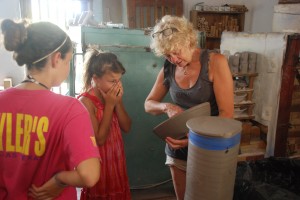
Maggie shows the kids the latest project
We also found a pottery studio that had been recommended. We apologetically traipsed our group of ten into this cute little studio on the hillside, overlooking the water. We met Maggie, who was a little startled by our arrival but very gracious and willing to give us a tour of her studio. She is also a painter and we admired her work. We especially loved a boat she had made for a client and tried to convince her to make one for us and ship it to the US, but she said it would never get there in one piece. We obviously couldn’t take one on the boat, even if she had one ready to sell. We’re still trying to figure out how to get one (hint to my potter friend Christina….)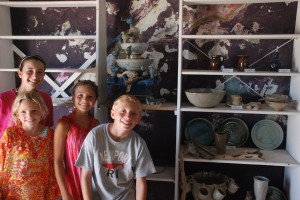
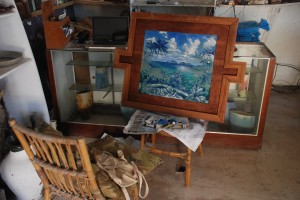
Maggie’s current painting
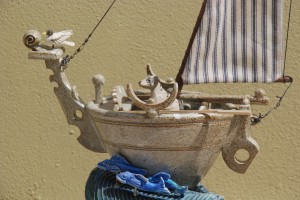
The boat Wendy and I really want.
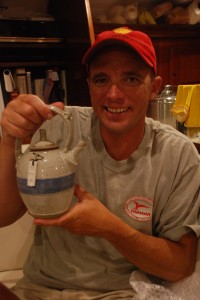
I bought Chris a little teapot from the potter. It had to get packed away till we get home. Waaaaaay too fragile for a sailboat!
8. Relax!
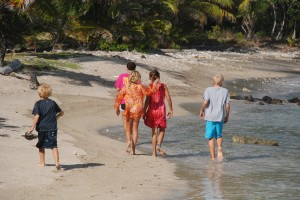
beachcombing along the eastern shore of Bequia
Which brings us back to Brother King and his turtle sanctuary. We left the pottery studio and went to see the turtles. Afterwards, we walked along the beach and stopped in at a resort for a drink. We let the kids play on the beach, even though it seemed like a very quiet and laid back place that probably didn’t need six kids tearing it up. The kids were great, though, and we enjoyed sitting at the bar in the gorgeous lobby. We took a hundred pictures of the driftwood and shell chandeliers that we hope to make someday. We strolled out to the beach and relaxed in lounge chairs. Wendy and I had a whole 10 minutes without interruptions from the kids, so we finally exchanged life stories with each other quickly before the opportunity evaporated.
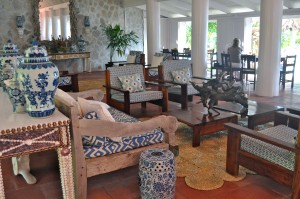
i felt so cozy in this hotel lobby.
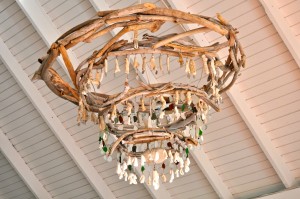
the driftwood and shell chandelier that i am TOTALLY making when we get back.
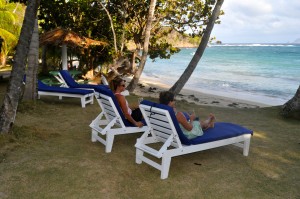
Wendy and Erica holding down the lounge chairs
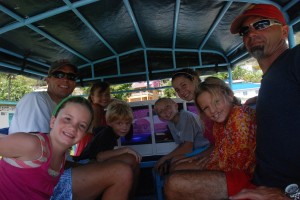
touring Bequia in our open air bus
9. “It’s hard to believe in coincidence, but it’s even harder to believe in anything else.” – John Green
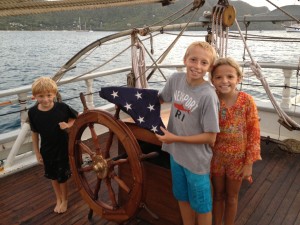
helping to fold the flag on the Harvey Gamage
Back at the harbor, the s/v Harvey Gamage was anchored nearby. We had anchored next to this school ship in Portland, Maine as well. What a coincidence! We managed to score a tour on board and met the captain, the cook, some teachers, and the students. High school students can spend a semester at sea, learning traditional subjects in addition to learning the art of sailing a traditional boat.
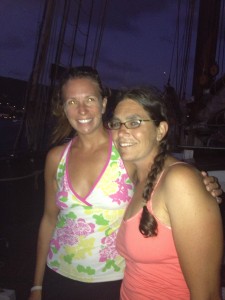
We meet in Bequia after meeting in Maine!
As we spoke to one of the teachers, we discovered yet another coincidence. When we were in Spruce Point, Maine, we had trouble finding a place to dock our dinghy. We went all around the harbor and finally found the docks for Outward Bound. We walked up to the main building and asked the woman there for permission to dock our dinghy for the evening. That woman was the teacher on the Harvey Gamage in Bequia! Really. This world is just completely amazing.
10. “If you truly love Nature, you will find beauty everywhere.” –Vincent Van Gogh
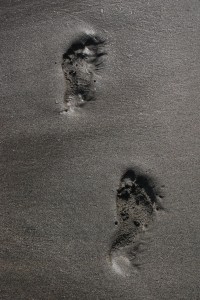 Another way to experience Bequia is to just open your eyes. Park your dinghy, take a walk, and enjoy the vistas that surprise you around every corner. It’s no wonder that this little island is a favorite amongst cruisers.
Another way to experience Bequia is to just open your eyes. Park your dinghy, take a walk, and enjoy the vistas that surprise you around every corner. It’s no wonder that this little island is a favorite amongst cruisers.
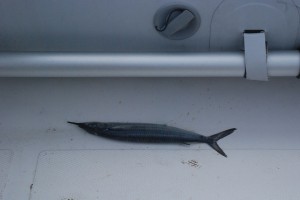
a ballyhoo jumps into our dinghy overnight. poor little guy.
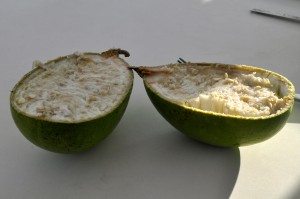
we make bowls from the amazing calabash fruit
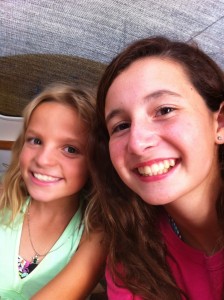
Reese and Maggie having fun
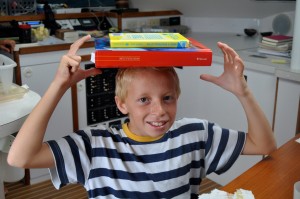
sleepover fun
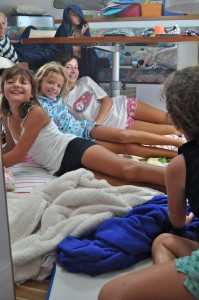
sixkidsandaboat. Can you spot the six kids having a sleepover on Anything Goes?
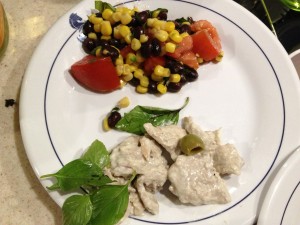
Reese makes her “Fishy Dish” which uses our fresh seared tuna, mayo, olives and lettuce to form the shape of a fish on the plate.
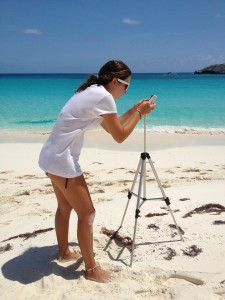 Welcome to the website, Maggie Boyer! Maggie is the resident videographer aboard s/v Anything Goes. At 14 years old, she has honed her editing skills with both video and photography, producing a “Video of the Month” on threekidsandaboat.blogspot.com. Watch what she had us doing on the beach one beautiful sunny day in Compass Cay, Exumas, Bahamas. It is absolutely hilarious. See if you can spot when 7 year old Olivia wipes out and we all just keep on going, like we were in a real marathon or something!
Welcome to the website, Maggie Boyer! Maggie is the resident videographer aboard s/v Anything Goes. At 14 years old, she has honed her editing skills with both video and photography, producing a “Video of the Month” on threekidsandaboat.blogspot.com. Watch what she had us doing on the beach one beautiful sunny day in Compass Cay, Exumas, Bahamas. It is absolutely hilarious. See if you can spot when 7 year old Olivia wipes out and we all just keep on going, like we were in a real marathon or something!




































